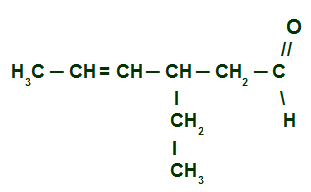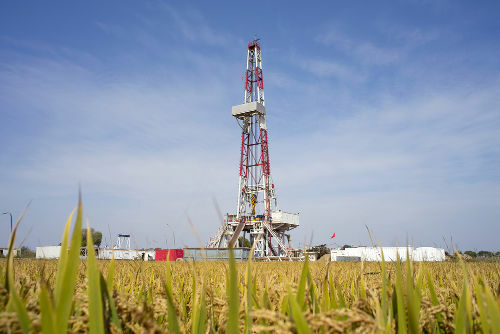THE Araguaia Guerrilla it was an attempt at revolutionary communist action in Brazil that took place between 1967 and 1974, in the region known as “Parrot's beak”, located on the border between the states of Pará, Maranhão and Tocantins (then Goiás). The guerrilla took its name from the fact that this region was intersected by the Araguaia river. The time of its development was the regimenMilitary, established in 1964 with the March 31 coup, although the ideological roots of its planning go back to the early 1960s.
The members of the Guerrilha do Araguaia were linked to the PC do B (Communist Party of Brazil), revolutionary party dissident from the former PCB (Brazilian Communist Party), and followed the strategic line Maoist, that is, the line taken by Mao Tse-Tung in China after theSecond World War. The purpose of this strategy was to establish a state of "prolonged people's war” in the North region of Brazil and, from there, try to take power in the country.
In order to understand, therefore, how the Guerrilha do Araguaia took place, we need to know a little more about the Maoist strategy.
PC do B and the Maoist option for the guerrilla
Throughout the 1950s, during the governmentsVargas and juscelinoKubitschek, the Communist Party of Brazil, the PCB, which had not yet changed its name to “Partido Comunista Brasileiro”, decided to change its name. Marxist-Leninist revolutionary position for a more lenient posture that fits democratic and republican institutions in force at the time. One of the objectives was to gain acceptance in the political-legal environment and the consequent rehabilitation of the party, which had been illegal since 1947.
This change was announced in the March 1958 Declaration. Two years later, in the V PCB Congress, the PCB leaders changed the name of the party, giving it a nationalist character: Brazilian Communist Party. However, many militants did not agree with these changes, mainly due to the flagrant abandonment of the revolutionary perspective. Among the dissatisfied were names like MauritiusGrabois and JoãoAmazons, which, inspired by Che Guevara's theory of revolutionary focus and above all in the strategy of “prolonged people's war”, by Mao Tse-Tung, formed a dissent that led to the epithet of Communist Party of Brazil or simply, PC do B.
Many militants from PC do B and also from other organizations, such as ActionPopular, received military training in 1963, in the Beijing Military Academy, therefore, before the military coup, which proves that the action of these groups was not a simple reaction to the Military Regime introduced in March 1964. The Maoist method, absorbed by the PC do B militants in Beijing, foresaw the installation of a guerrilla center in the North of Brazil, between the Amazon rainforest, the Northeast and the Midwest. The focus would serve to program the expansion of the revolution from rural to urban areas. The reaction of the country's regular army would be “maneuvered” by the guerrillas with a view to extreme wear and tear, as well defined by the military and historian Alessandro Visacro:
[…] guerrilla warfare alone was not enough to inflict a decisive war on the enemy and ensure the seizure of power. In fact, it was not up to the guerrillas to win, only to wear down the opposing forces, forcing them to fight long and inconclusive campaigns – it was enough not to be defeated. While playing an important role in winning the support of the population, the guerrilla groups, accumulating small successes, they continually expanded their organizational structure, right up to the last stage, without losing some of the essential qualities of maneuver, initiative, freedom. of action, support from the population and knowledge of the terrain, the irregular units were transformed into conventional troops capable of fighting and winning large battles. [1]
Do not stop now... There's more after the advertising ;)
The assembly of the PC do B guerrilla focus in the region of Bico do Papagaio began in 1967. Other focuses, such as the VAR-Palmars, in CarlosLamarca, were also assembled in the same region, but quickly identified and defeated by the Army. The PC do B militants were the last to be discovered, which only occurred in 1972.
Discovery and dismantling of the guerrillas
The Brazilian military managed to identify the Guerrilha do Araguaia based on investigations carried out with the population of peasants who inhabited the surroundings of Bico do Papagaio. It should be noted that some of these peasants collaborated and were part of the guerrilla group. The main operations carried out against the Guerrilha do Araguaia were: OperationParrot, Operationanaconda and OperationMarajoara. Among the main commanders were the colonelsBullfinch and Niltonfencing.
As journalist Elio Gaspari recounts, in his work “The Escaped Dictatorship”, at the beginning of the Army's campaign against the guerrillas, that is, in the first 45 days:
[….] military operations were conducted in order to push the guerrillas to the highest and driest lands, to ambush them when they went down in search of water. This tactic had resulted in three successful clashes, with the capture and death of six guerrillas. There were around 50 frames left (trained militants) of the PC do B, and the Operation Marajoara it ran the risk of repeating the failure of previous attacks. In December, Colonel Nilton Cerqueira, who two years earlier had ambushed Carlos Lamarca in the backlands of Bahia, took over the operations. He installed his command post in a farm corral and changed tactics. Young lieutenants and captains entering the bush had long insisted that the line of caution should be changed to aggressiveness. Two bases of operations lost in the jungle gained autonomy from the refrigerated room in the blue-roofed house. It was the application of a teaching of counterinsurgency forces: “Guerrilla fights with guerrillas”. [2]
The resistance offered by the guerrillas, who did not expect to be discovered in 1972, deprived of good weapons and without an escape strategy, was almost innocuous. The military, superior in number and in weapons quality, “hunted” the guerrillas one by one for three years, arresting, torturing, shooting and hiding the corpses.
Among the main names of PC do B acting in the Guerrilha do Araguaia, we can mention: MicheasGomesde Almeida (the “Zezinho do Araguaia”), JoãoAmazons, angeloarroyo, MauritiusGrabois (guerrilla leader), ElzaMonetary, Osvaldo Orlando da Costa (aka "Osvaldão”), Nelson Piauhy Dourado, you brothersPetit (Maria Lúcia, Jaime and Lúcio), Regilena dto Silva Carvalho (Lena), JosephGenoin (codename Geraldo), among others, which, in total, reached 71.
GRADES
[1] VISACRO, Alessandro. Irregular War: Terrorism, Guerrilla and Resistance Movements throughout History. São Paulo: Context, 2009. P. 85.
[2] GASPARI, Elio. “The Open Dictatorship”. In: The Armed Illusions (vol. 2). Rio de Janeiro: Intrinsic, 2014. P. 453.
By Me. Cláudio Fernandes



